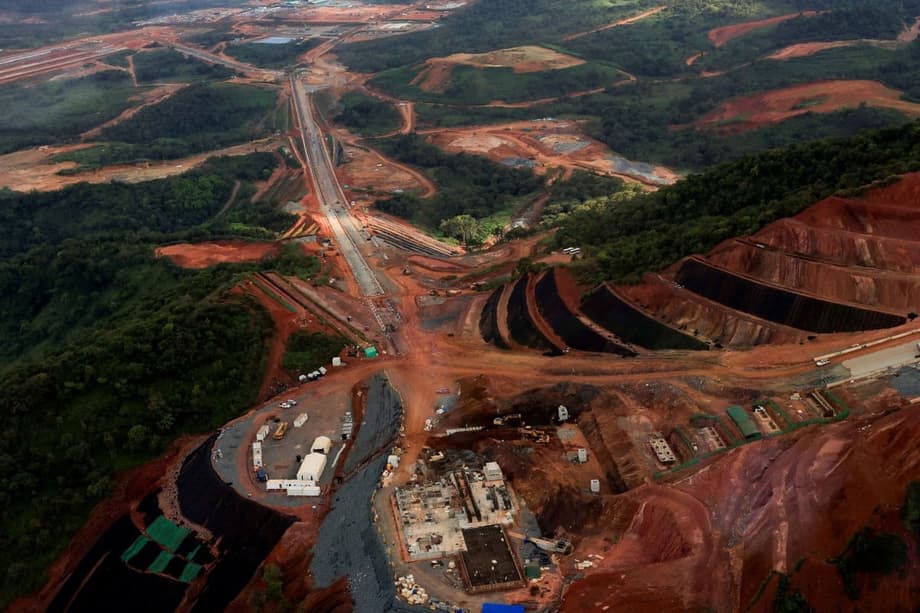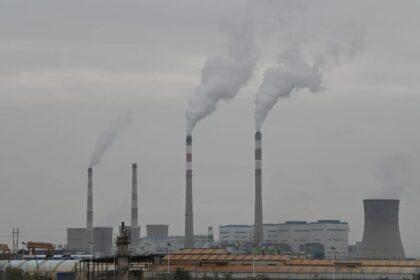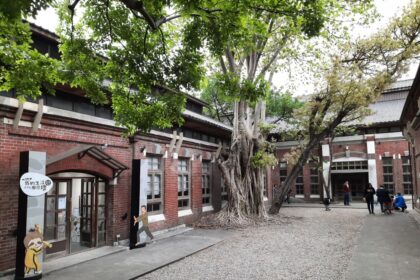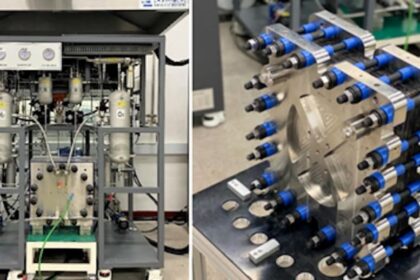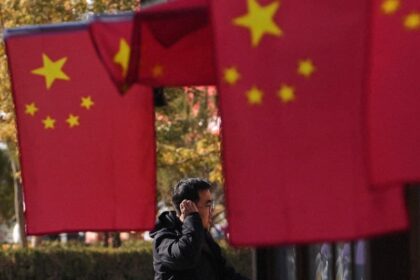A new source of high grade iron ore reaches the market
Guinea’s 20 billion dollar Simandou project has shipped its first cargo of iron ore from the new port at Morebaya, a moment that caps nearly three decades of stop start development and places West Africa at the center of the iron ore trade. Chinese and regional African leaders attended the ceremony, including China’s Vice Premier Liu Guozhong, underscoring how the cargo’s 45 day voyage to China ties directly to Beijing’s goals to secure cleaner steel inputs and reduce exposure to single country suppliers.
The first ore was loaded to a 200,000 ton bulk carrier via offshore barge operations, a stopgap while full port systems ramp up. Simandou is a fully integrated mine, rail and port venture linking a remote mountain deposit in southeastern Guinea to the Atlantic coast. The deposit sits among the world’s largest untapped resources of high grade iron ore, with typical iron content around 65 percent and low impurities sought by modern steel mills.
Once both mines reach steady state, Simandou aims to produce about 120 million tons per year. That volume would equal roughly seven percent of global seaborne iron ore and around five percent of total supply, according to industry estimates. It could also represent close to ten percent of China’s current annual imports. Most early shipments are expected to head to Chinese buyers because Chinese state owned and private firms financed and operate large parts of the project.
What is Simandou and who runs it
Simandou spans four blocks on a long ridge in southeastern Guinea. The resource is being developed by two consortia that share a national heavy haul railway and the new port at Morebaya. The arrangement required rare cooperation across rival groups, but the shared infrastructure was the only way to move such volumes from the interior to deep water berths.
Ownership and stakes
The northern area, often referred to as Simandou North or Blocks 1 and 2, is led by Winning Consortium Simandou, a group that includes Singapore based Winning International and Chinese industrial partners, with China Baowu Steel Group holding an interest. The southern area, Simandou South or Blocks 3 and 4, is developed by Simfer, a joint venture led by Rio Tinto with Chalco Iron Ore Holdings and the Government of Guinea. Guinea holds about a 15 percent stake in the mines and in key infrastructure, part of a model designed to secure long term state revenue.
Chinese entities collectively control the majority of future output, around three quarters by some estimates, which is one reason most of the ore will route to China in the early years. Rio Tinto has reported stockpiling about 2 million tons of ore on site ahead of first exports and said it began loading ore onto the railway in October. Early cargoes from the southern mine are expected to move using facilities developed by its northern partners as the southern port capacity reaches full operation.
Rail and port logistics
The Cross Guinea heavy haul line stretches for more than 620 kilometers from the mountains to Morebaya. The line includes dozens of bridge and tunnel structures designed for continuous, high axle load traffic. The two consortia jointly own the railway company that operates the corridor, allowing ore from both mines to move to the coast. Port capacity is expected to scale toward 120 million tons per year, which would require a large deployment of Capesize bulk carriers once steady operations begin.
Trial runs have already begun on the rail line. In October, engineering trains started moving along the route, a sign that the complicated civil works phase is nearing completion. The first ocean cargo left under a barge and transshipment set up that will give way to full ship loading as berths and ship loaders are commissioned. Chinese shipping firms are investing in additional tonnage to cover the long Guinea to China rotation.
Why China wants Simandou’s ore
Chinese steelmakers are searching for ways to cut emissions while maintaining competitiveness. High grade ore lets blast furnaces use less coke per ton of steel, which reduces both energy use and carbon output. It also improves productivity in newer pathways, such as direct reduced iron modules that feed electric arc furnaces. As mills shift over time toward more scrap and electric steel, demand for cleaner raw materials remains strong for the large share of steel still made through blast furnaces, and for new low carbon routes that prefer higher purity inputs.
Supply security also matters. China remains the world’s largest iron ore buyer and has long depended on Australia and Brazil. Strategic tensions and trade frictions have encouraged diversification. Beijing has set up China Mineral Resources Group to centralize procurement and sharpen its bargaining position. Simandou fits that strategy, with Chinese firms invested across the mine, rail and maritime chain to secure predictable flows of high grade ore.
Executives at China Baowu, the world’s largest steelmaker, have framed Simandou as a milestone for securing premium raw materials to support a cleaner steel industry in China and abroad. That aligns with China’s push to reduce emissions intensity in heavy industry while keeping costs in check through stronger supply control.
Price effects and market power
Analysts expect Simandou to shift the balance in global iron ore. The new supply will be large enough to pressure higher cost, lower grade producers, especially during market slowdowns. At the same time, the ore’s quality should command a premium as mills pay for higher iron content and fewer impurities that cut energy needs. Industry projections suggest that, once both mines are at capacity, Simandou could account for roughly 4 to 5 percent of worldwide supply and push seaborne trade into surplus from the mid 2020s. Some estimates indicate that by 2028, extra volumes could lift seaborne supply by close to eight to nine percent compared with current levels.
The economics are complex. China wants to reduce its import bill by broadening supply and using centralized buying. Guinea, which holds equity stakes and aims to fund the Simandou 2040 development plan in infrastructure, agriculture and education, prefers to maximize value over the long run. Rio Tinto, with experience marketing premium ores, also has an interest in keeping a healthy premium for high grade material. That dynamic has pulled Guinea and Rio Tinto closer together at times, even as China remains the main customer and the largest investor.
Guinea’s minister of mines and geology, Bouna Sylla, has said the government will manage price and market strategy carefully while engaging with partners. Introducing his position on China’s consolidation of iron ore buying, he stated:
“We are closely following the formation of China Mineral Resources Group (CMRG).”
Officials say Guinea will seek a broad customer base over time, including Europe and the Middle East, especially as green steel demand grows in those regions. Rio Tinto may also blend Simandou fines with material from its Pilbara operations to meet different customer specifications. The main constraint near term is the speed of the rail and port ramp up and the synchronization between the two mining areas.
Shipping and freight effects
Simandou’s location changes the map for dry bulk shipping. Moving large volumes from West Africa to East Asia adds much longer sailing distances than the routes from Australia to China. That increases tonne miles, the key measure of transport work in shipping, and can tighten the supply of Capesize vessels during busy periods. At full planned output, the port’s throughput would require roughly 170 Capesize voyages per year, a substantial slice of the global fleet’s schedule.
Chinese shipowners are already ordering new tonnage to secure capacity on the West Africa to China corridor. The first cargo’s 45 day transit illustrates the freight time commitment compared with the typical two week journey from Western Australia to northern China. Port and channel improvements at Morebaya, plus a transition from barge transfers to direct ship loading, should raise efficiency and reduce turn times as the project ramps.
Guinea’s plans and local impact
Simandou is central to Guinea’s strategy to convert mineral wealth into broader growth. The government’s Simandou 2040 plan sets out how mining revenues and shared infrastructure will support investments in roads, power, agriculture and education. The heavy haul railway is designed for more than ore. It can carry general cargo and passengers, linking remote regions to coastal markets. That connectivity could reduce transport costs for businesses and open new opportunities for communities along the corridor.
Guinean officials have described the project as a national effort with long term benefits. In a statement reflecting the administration’s view, Presidential Chief of Staff Djiba Diakite said:
“Simandou is more than a mining project: it is the driving force behind a national transformation.”
Development has accelerated in recent years, with more than ten thousand workers engaged at peak construction and multiple contractors mobilized across the route. The government’s equity participation in the mines, railway and port, combined with local content requirements, is meant to anchor a durable fiscal stream and skills transfer.
Risks to watch
Large projects of this scale face predictable and unpredictable challenges. Heavy seasonal rains and difficult terrain can slow construction and affect slope stability. Safety performance has been under scrutiny after incidents during the build. Coordination between the two mining areas and the shared rail link must remain tight to keep ships supplied. Political risk is part of the story as well. In 2022, Guinea’s authorities paused work to renegotiate terms and assert national priorities before allowing construction to resume.
Procurement disputes offer another window into the risk profile. The government ordered that locomotives for the new railway meet specific standards and long life requirements because the assets revert to the state after lease expiry. After the issue came to light, Minister of Mines Bouna Sylla explained the government’s stance on durability and maintenance over time, saying:
“We do not want to inherit something that requires excessive maintenance after 35 years.”
The scale of the operation also makes the ramp up a delicate phase. Port berths, stockyards, shiploaders, signalling and rolling stock must pass through commissioning and reliability growth. Any bottleneck can slow exports. Even with those risks, the consortium has already moved engineering trains and the first ocean cargo. The next test lies in sustaining that pace while output rises month by month.
What to Know
- First Simandou cargo sailed from Guinea’s Morebaya port and is bound for China on a 45 day voyage.
- Project cost exceeds 20 billion dollars and integrates mines, a more than 620 kilometer heavy haul railway and a deepwater port.
- Full capacity is set at about 120 million tons a year, near seven percent of global seaborne iron ore.
- Ore quality is high, around 65 percent iron with low impurities, supporting cleaner steelmaking.
- Ownership is split: Rio Tinto and Chalco lead the southern blocks, while Winning Consortium Simandou leads the northern blocks, with Guinea holding stakes and Chinese parties controlling most output.
- China seeks Simandou for decarbonization of steel and supply diversification away from Australia and Brazil.
- Analysts expect added supply to weigh on lower grade, higher cost producers while keeping a premium for high grade fines.
- The long West Africa to China route boosts tonne miles and could lift demand for Capesize bulkers.
- Guinea plans to use project revenues to fund infrastructure, agriculture and education as part of the Simandou 2040 plan.
- Ramp up risks include weather, safety, consortium coordination and infrastructure reliability, though first rail and ocean moves are underway.


